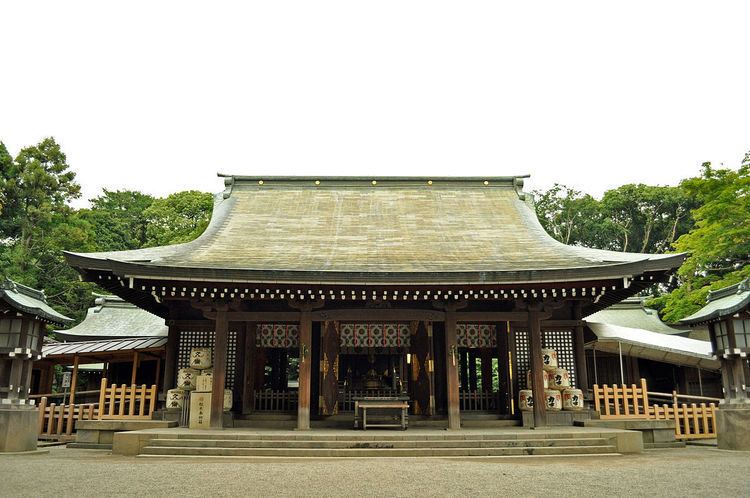Founded 473 BC Phone +81 48-641-0137 | Founder Emperor Kōshō | |
 | ||
Reisai Reitaisai (Annual main festival) (August 1) Website musashiichinomiya-hikawa.or.jp Similar Kawagoehikawa Shrine, Hikawanyotai Shrine, Ōmiya Station, Tsuki Shrine, Ōmiya Park | ||
Hikawa Shrine (氷川神社, Hikawa-jinja) is a Japanese Shinto shrine in Omiya-ku, Saitama, Saitama Prefecture. Surrounding the shrine is a large park in which there are many cherry blossom trees, a zoo and a museum.
Contents
The district of Omiya, literally "Great Shrine", derives from the special favor shown by Emperor Meiji, who raised Hikawa above all other shrines in the Kantō region.
Standing behind three torii gates in a wood with many ancient Japanese elms, it claims to have a 2400-year history.
History
According to the shrine's tradition, the shrine was established during the reign of Emperor Kōshō in 473 BC. A legend recounts that Yamato Takeru, who injured his leg during his crusade to the East, visited the shrine in accordance with the directions of an old man who appeared in a dream. After worshiping, he was able to stand on his own. It is known that the old name of the region, Ashidate (足立), literally meaning "leg stand", was named after this incidence. The pond within the grounds of the shrine is a remnant of Minuma and considered to have roots in enshrining the water god of Minuma.
Hikawa was designated as the chief Shinto shrine (ichinomiya) for the former Musashi province. This main shrine has 59 branch shrines in Tokyo and 162 branch shrines in Saitama Prefecture.
From 1871 through 1946, Hikawa Shrine was officially designated one of the Kanpei-taisha (官幣大社), meaning that it stood in the first rank of government supported shrines. The main shrine structure was renovated in 1882. In 1940, a project financed by the government reconstructed the main shrine structure, the gate tower, and other structures.
In 1976, the Large Torii of Meiji Shrine which had been damaged by lightning in 1966 was repaired and relocated to Hikawa Shrine.
Imperial visits to the shrine
Shinto belief
This Shinto shrine is dedicated to the veneration of the kami or spirits of Susanoo no mikoto, Ōnamuchi-no-mikoto and Inadahime no mikoto.
Related shrines
As many as 290 daughter shrines exist across Japan, all named "Hikawa". Most are small, but all are considered dwelling places of Susanoo.
